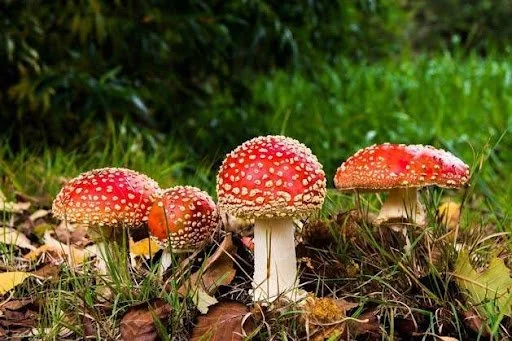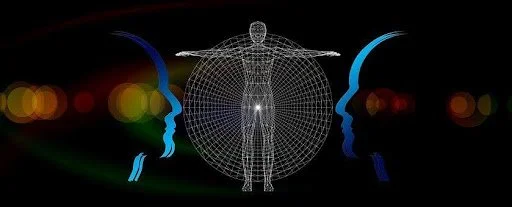Mushrooms for your Mental Health
By Kaylee Petersen
In recent years the mental health movement has led individuals to start taking care of themselves in a different way. Instead of taking care of their body, they are taking care of their mind. Due to this movement, new treatment options are becoming available. One of these new treatment options involves a type of mushroom that people have been using for years. The type of mushroom, what method of therapy they are used with, and some of the concerns regarding this type of therapy, as well as the benefits, will all be discussed within this short blog.
The mushrooms being used in combination with a type of therapy called psychotherapy look like the stereotypical mushroom. They have a red top with white spots and have the scientific name of Amanita muscaria. These mushrooms have been used for years due to their hallucinogenic properties. In recent studies, mushrooms have shown higher self-rated scores of positive mood and social behavior (Kuypers, 2020). These mushrooms act upon receptors in your brain which allows them to increase your mood.
Mushrooms containing a chemical known as psilocybin are being used alongside a form of therapy to help people with numerous mental health issues. The therapy being used is called psychotherapy. Psychotherapy is a form of therapy that uses communication and interactions to help the patient. When mushrooms and psychotherapy are being used together, they have shown enormous promise in treatment. Psychotherapy differs from the standard form of therapy. Psychotherapy has been seen as a more out of the box approach which focuses on dreaming, emotions, and instincts that drive our lives. In traditional therapy, certain drugs may be prescribed to help individuals who are struggling with mental health issues. Yet not all people benefit from traditional therapy in combination with drugs. Since mushrooms have been shown to increase positive mood, when used along with psychotherapy individuals have shown promising results in the trials done. This makes for a great opportunity to offer other treatment options for those who did not like traditional therapy or felt as though the drugs accompanied by traditional therapy did not benefit them.
These mushrooms containing psilocybin are classified as hallucinogens. Hallucinogens are plant drugs that can induce different feelings and thoughts in the person who consumes them. Unlike other drugs commonly taken for mental health issues that can cause dependence and withdrawal symptoms, mushrooms have shown no indications of being addictive or having negative effects, when given in appropriate dosages (Kuyper, 2020). When people hear the word hallucinogen, they don’t normally think of it in a positive light. Hallucinogens can have negative effects. Some of the common negative symptoms are nausea and hallucinations which can be unpleasant (Hamilton, 2022). Although hallucinogens can have negative effects when taken in large quantities and not in a clinical setting, mushrooms that are being used in therapy are regulated and controlled by professionals who are trained in this area (Wheeler & Dyer, 2020).
Using mushrooms in therapy has shown to be beneficial in studies and trials done in recent years. In trials done some of the areas of mental health issues that showed improvement through taking mushrooms in addition to therapy were anxiety and depression, PTSD, substance use disorders, and obsessive-compulsive disorder (Wheeler & Dyer, 2020). Many people who have had experience with “magic mushrooms” have discussed the feelings they underwent during their time being affected by the hallucinogenic. Some of the shared experiences are out of body feelings, strengthening of the mind and body connection, and more vibrant visions of color. Giving individuals another treatment option, means there are more ways to help people.
Mushrooms containing psilocybin are being used along with psychotherapy to provide another treatment option for individuals struggling with mental health. This has proven to help things like substance use disorders, PTSD, and depression. Overall, while studies have shown promising results, more studies and regulations are still needed to make this therapy available to everyone. Alongside the call for more studies and regulations, there will also be a call for more licensed and trained therapists to help administer the correct dosage and guide the individual through their journey with “magic mushrooms”. Recently Oregon has started offering classes and just held a graduation for 35 students who completed the proper training to play their part in mushroom-assisted therapy. This is a huge step in the right direction. It has been forecasted that around 8,000 therapists will be needed to help this movement in the years to come (Jeffries, 2022). So, I encourage you to investigate this new field of therapy and possible job opportunities, see if there’s “mushroom” for growth.
References
Franz X. Vollenweider (2001) Brain mechanisms of hallucinogens and entactogens, Dialogues in Clinical Neuroscience, 3:4, 265-279, DOI: 10.31887/DCNS.2001.3.4/fxvollenweider
Hamilton, J. (2022, December 27). Psychedelic drugs may launch a new era in psychiatric treatment, brain scientists say. NPR. https://www.npr.org/sections/health-shots/2022/12/27/1145306096/psychedelic-drugs-psychiatric-disorders-brain-research
Jeffries, Danica. (2022, December 26). Psychedelic drug could help treat addictions, study shows. NBC News. https://www.nbcnews.com/health/mental-health/psychedelic-therapies-are-horizon-will-administer-rcna61030
Kuypers KPC. The therapeutic potential of microdosing psychedelics in depression. Therapeutic Advances in Psychopharmacology. 2020;10. doi:10.1177/2045125320950567
Wheeler, S. W., & Dyer, N. L. (2020). A systematic review of psychedelic-assisted psychotherapy for mental health: An evaluation of the current wave of research and suggestions for the future. Psychology of Consciousness: Theory, Research, and Practice, 7(3), 279-315. https://doi.org/10.1037/cns0000237

